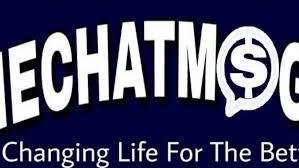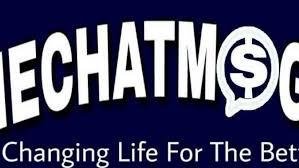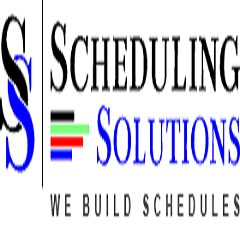In the world of project management, time is money. Delays can lead to budget overruns, missed opportunities, and frustrated stakeholders. This is where project scheduling comes into play. A well-crafted schedule is the backbone of any successful project, ensuring tasks are completed on time, resources are allocated efficiently, and goals are met. In this article, we’ll explore the fundamentals of project scheduling, discuss proven solutions, and share best practices to help you master this critical aspect of project management.
What is Project Scheduling and Why Does It Matter?
Project scheduling is the process of planning, organizing, and managing tasks, resources, and timelines to achieve project objectives. It provides a clear roadmap for teams, helping them stay on track and avoid costly delays. Without a solid schedule, projects can quickly spiral into chaos, with missed deadlines, resource conflicts, and unclear priorities.
The importance of project scheduling cannot be overstated. It:
-
Ensures efficient use of resources.
-
Helps identify potential bottlenecks early.
-
Provides a clear timeline for stakeholders.
-
Improves communication and accountability within teams.
Key Components of Project Scheduling
To create an effective project schedule, you need to focus on the following components:
-
Task Identification: Break the project into smaller, manageable tasks. For example, if you’re developing a website, tasks might include designing the layout, writing content, and testing functionality.
-
Duration Estimation: Estimate how long each task will take. Be realistic and account for potential delays.
-
Resource Allocation: Assign team members, equipment, and budget to each task. Ensure resources are available when needed.
-
Dependency Management: Identify task dependencies. For instance, you can’t start coding a website before the design is finalized.
-
Milestone Tracking: Set key milestones to measure progress. Milestones act as checkpoints to ensure the project is on track.
Popular Project Scheduling Techniques
There are several techniques you can use to create and manage project schedules:
-
Gantt Charts: A visual tool that displays tasks along a timeline. Gantt charts are great for tracking progress and identifying overlaps.
-
Critical Path Method (CPM): Identifies the longest sequence of tasks that determine the project’s duration. Focus on these tasks to avoid delays.
-
Program Evaluation and Review Technique (PERT): Uses probabilistic time estimates to account for uncertainty in complex projects.
-
Agile Scheduling: Focuses on iterative progress and flexibility, making it ideal for dynamic projects like software development.
Project Scheduling Solutions: Tools and Techniques
1. Software Tools
Modern project scheduling software has made it easier than ever to manage complex projects. Here are some popular options:
-
Microsoft Project: A comprehensive tool for large-scale projects with advanced scheduling features.
-
Primavera: Ideal for industries like construction and engineering, where projects have complex dependencies.
-
Asana and Trello: User-friendly tools for smaller teams and agile projects.
These tools offer features like real-time collaboration, automated notifications, and integration with other software, making them invaluable for project managers.
2. Custom Scheduling Solutions
For organizations with unique needs, custom scheduling tools can be developed. These solutions are tailored to specific workflows and can integrate seamlessly with existing systems like ERP or CRM platforms.
3. Manual Scheduling Techniques
While software is highly effective, manual scheduling still has its place. For small projects or teams with limited budgets, tools like spreadsheets or whiteboards can be sufficient. The key is to follow best practices, such as regularly updating the schedule and clearly communicating changes to the team.
How to Implement a Project Scheduling Solution
Step 1: Assess Current Practices
Start by evaluating your current scheduling processes. Identify inefficiencies, such as missed deadlines or resource bottlenecks, and gather feedback from team members.
Step 2: Select the Right Solution
Choose a scheduling tool or technique that aligns with your project’s requirements. Consider factors like cost, scalability, and ease of use. Involve key stakeholders in the decision-making process to ensure buy-in.
Step 3: Pilot Test the Solution
Before full-scale implementation, conduct a pilot test to evaluate the chosen solution. Use a small project to identify any issues and gather feedback from users.
Step 4: Roll Out the Solution
Once the pilot test is successful, roll out the solution across all relevant projects. Provide training and support to ensure a smooth transition.
Step 5: Monitor and Evaluate
Track the effectiveness of the scheduling solution using metrics like on-time completion rates and resource utilization. Regularly review the system and make adjustments as needed.
Managing Risks in Project Scheduling
Even the best-laid plans can encounter unexpected challenges. Here’s how to manage risks in project scheduling:
-
Identify Potential Risks: Common risks include unrealistic timelines, resource shortages, and unexpected delays.
-
Mitigate Risks: Build buffer time into the schedule, regularly review and update the schedule, and develop contingency plans for critical tasks.
Real-World Examples and Best Practices
Case Study 1: Success Story
A construction company used Primavera to manage a complex infrastructure project. By accurately tracking dependencies and resource allocation, they completed the project two weeks ahead of schedule.
Case Study 2: Lessons Learned
A software development team failed to meet deadlines due to poor dependency management. This highlights the importance of accurately sequencing tasks and regularly updating the schedule.
Best Practices
-
Start with a clear project scope and well-defined tasks.
-
Communicate the schedule to all stakeholders regularly.
-
Use visual tools like Gantt charts to keep everyone aligned.
-
Avoid overloading team members by balancing workloads.
Conclusion
Project Scheduling Solutions is a critical skill for any project manager. By leveraging the right tools, techniques, and best practices, you can overcome common scheduling challenges and achieve project success. Whether you choose a software solution or a manual approach, the key is to remain flexible and proactive in managing your schedule.



